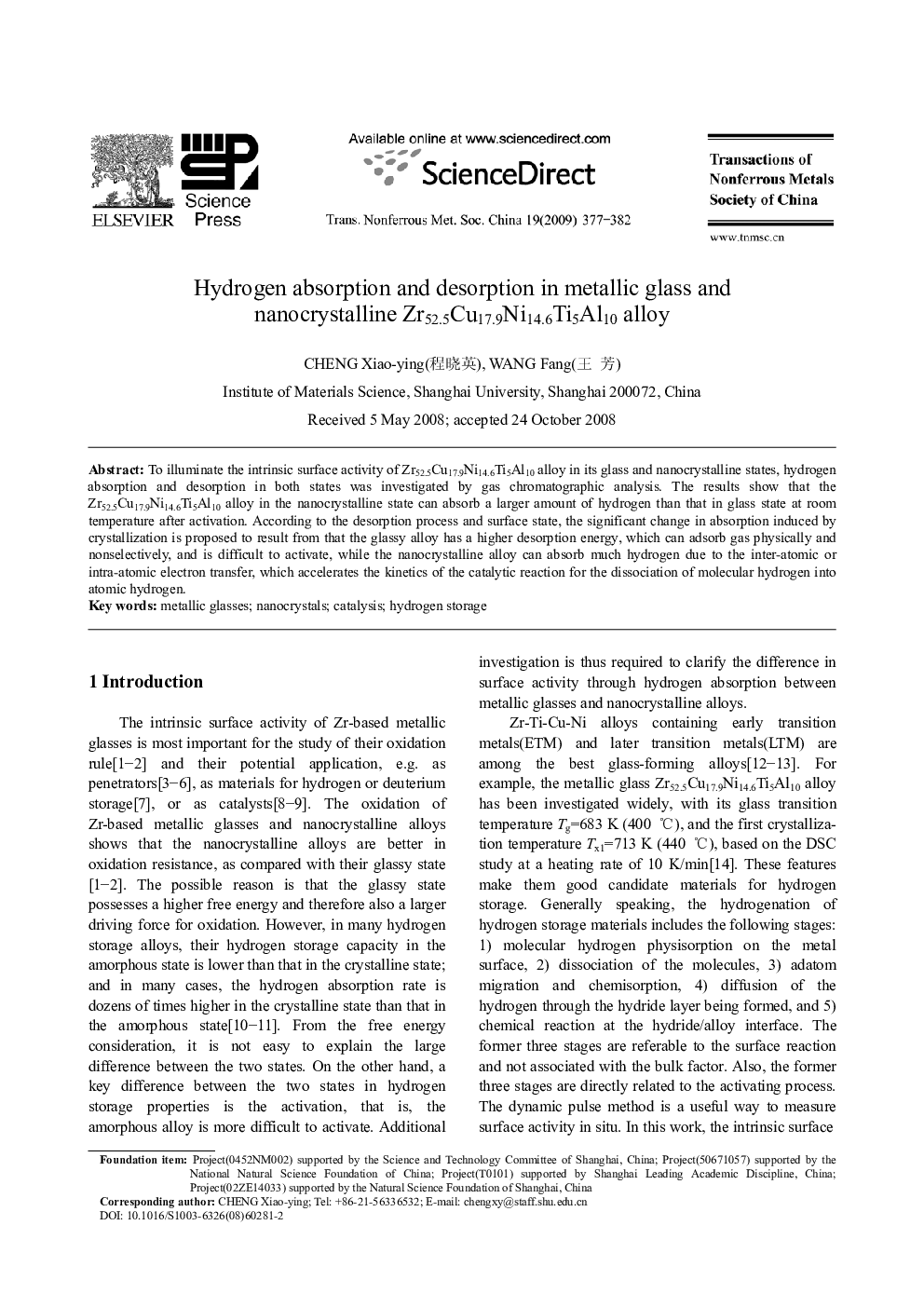| Article ID | Journal | Published Year | Pages | File Type |
|---|---|---|---|---|
| 1640645 | Transactions of Nonferrous Metals Society of China | 2009 | 6 Pages |
To illuminate the intrinsic surface activity of Zr52.5Cu17.9Ni14.6Ti5Al10 alloy in its glass and nanocrystalline states, hydrogen absorption and desorption in both states was investigated by gas chromatographic analysis. The results show that the Zr52.5Cu17.9Ni14.6Ti5Al10 alloy in the nanocrystalline state can absorb a larger amount of hydrogen than that in glass state at room temperature after activation. According to the desorption process and surface state, the significant change in absorption induced by crystallization is proposed to result from that the glassy alloy has a higher desorption energy, which can adsorb gas physically and nonselectively, and is difficult to activate, while the nanocrystalline alloy can absorb much hydrogen due to the inter-atomic or intra-atomic electron transfer, which accelerates the kinetics of the catalytic reaction for the dissociation of molecular hydrogen into atomic hydrogen.
